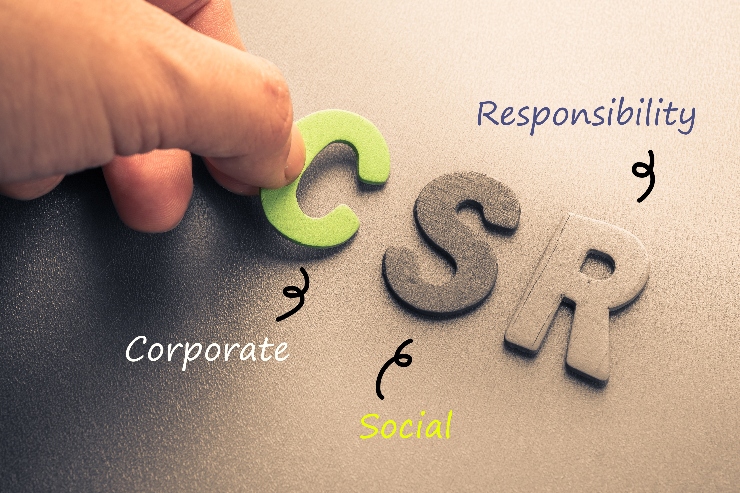Businesses want to address environmental, social, and governance (ESG) challenges but often fail. While organisations’ policies may be well-meaning, they often become decoupled from actual practices. Organisational efforts at change continue to focus on crafting “new and better” policies, but without commensurate attention to the rest of the organisational landscape, which includes internal and external stakeholders. Sukhbir Sandhu, Carol T Kulik, Sanjeewa S Perera, and Sarah A Jarvis developed a framework that works as a roadmap to ensure that ESG change efforts succeed.
Demands for businesses to act on environmental, social, and governance (ESG) challenges are reaching a crescendo (e.g., emissions reduction, climate strikes, Black Lives Matter, #MeToo). But despite expressing commitments and good intentions, businesses are falling short of addressing these challenges. For example, BHP, a mining company, set an ambitious policy target in 2016 to achieve a 50-50 gender balance across its workforce by 2025. However, the company’s progress on gender equality goals continues to be slow, and cynicism is growing among employees and other stakeholders.
Organisations often respond to societal and regulatory demands for ESG by enacting policies to deal with these challenges. However, our research (here and here) highlights that while such policies may be well-meaning, they often become decoupled from actual practices. For example, to address workplace diversity, an organisation might introduce formal policies on mentoring and leadership development programmes for minorities, but these policies will be ineffective if local managers do not actively encourage the minority employees to take on these opportunities or if other barriers (e.g., biased promotion criteria) remain unaddressed. Similarly, policies aimed at measuring environmental outputs do not guarantee reduction in environmental impacts.
Our research shows that organisational efforts at change continue to focus on crafting “new and better” policies. However, without commensurate attention to the rest of the organisational landscape (which includes internal and external stakeholders), even the most carefully constructed policies will fail to deliver the desired outcomes.
Drawing on organisational spatial literature and our primary data (interviews with more than 100 organisational decision-makers, employees, and stakeholders across 25 global businesses) we developed the Three Spaces Framework for Sustainable Change. Organisations can use this framework as a clear roadmap for ensuring that their ESG change efforts succeed. This framework shows how businesses can start addressing these challenges, gain momentum, and stay on course.
The framework describes organisations as operating across three metaphorical spaces: physical, mental, and social.
- Physical space describes the organisation’s formal structures (e.g., roles, policies, and programmes) that relate to strategic issues.
- Mental space is the organisational members’ (e.g., managers and employees) shared understanding about these issues (i.e., organisational identity).
- Social space is the external stakeholders’ (e.g., customers and community members) shared perception of organisational action on these issues (i.e., organisational reputation).
The three spaces are interconnected. Our framework explains that organisations can achieve sustained progress on an issue only when their activities are simultaneously supported across all three spaces.
Starting action: Organisations can start their change efforts in any one of the three spaces. For example, Patagonia, an outdoor clothing manufacturer, started its ESG journey by focussing on the mental space and creating shared understanding of what it means to be a sustainable and responsible company. When Patagonia first considered making a shift to organic cotton, production employees protested that organic cotton clogs the machines. Design employees questioned the need for a complete redesign when no one else in the industry was making this shift. In response, the senior management took the employees (about 40 at a time) to visit a conventional cotton farm and an organic cotton farm. At the conventional cotton farm, employees could see (and smell) the effects of organophosphates (developed as nerve gases for use in World War 2 and used as pesticide in conventional cotton farms). The soil in conventional cotton farms was devoid of worms and there were no birds in the sky. These trips created a shared understanding among the employees about “how it might be hard to be responsible but why it was the right thing to do”.
Gaining momentum: This involves anchoring these initiatives in the other two spaces. After Patagonia had successfully created shared understanding about ESG among managers and employees, it moved on to formalise this commitment through policies (e.g., removing hazardous waste from their operations). Removing hazardous waste was no easy feat, especially as many of these hazardous materials were critical in making the outdoor apparel waterproof and weather resistant. Removing these harmful chemicals compromised the longevity of the outdoor apparel. But Patagonia committed to years of research and development to ensure that their products and operations could achieve that elusive balance between performance and environmental safety. In 2012, Patagonia certified as a BCorp, thereby sending a clear signal to its external stakeholders about its commitment to purpose and profit.
Staying the course: This involves continually nurturing the initiatives through action across all three spaces. Once Patagonia had created a shared understanding among employees (mental space), formalised the commitment through clear policies (physical space) and certified as a BCorp to hold itself accountable to stakeholders through a rigorous certification process (social space), it then worked at continually checking-in across the three spaces to ensure that none of the spaces were lagging or pulling the other spaces back. Instead, concerted action across all three spaces reinforced and strengthened the virtuous cycle. For example, Patagonia recently revised their mission statement to “We’re in Business to Save Our Home Planet” (the previous mission statement was about “Cause No Unnecessary Harm”). The new mission updates the shared understanding of organisational purpose. This in turn led Patagonia to strengthen its formal policies to include its supply chain partners to ensure that their products are produced under safe, fair, legal, and humane working conditions.
The bottom line: To ensure successful action on ESG challenges, organisations need to fortify activities across all three spaces; strengthening formal structures, policies, and programmes (physical space), creating shared understanding inside the organisation (mental space), and communicating a clear message that transcends organisational boundaries (social space).
When organisations focus their ESG efforts in only one of the three spaces (e.g., formalising roles and policies in the physical space) independently of the other spaces, it can lead to policy-practice decoupling (having formal policies but ineffective implementation). Similarly, if organisations focus their ESG efforts only in the social space (communicating their commitment to external stakeholders) but do not demonstrate commensurate action in mental and physical spaces, it can lead to accusations of misleading stakeholders.
ESG issues are hard. Failures can be demoralising for employees and lead to accusations of hypocrisy from external stakeholders. But as the clock ticks on and action on ESG issues becomes a pressing moral and ethical imperative, organisations will have to overcome their inertia. Our framework shows how.
♣♣♣
Notes:
- This blog post is based on Gender equality in organizations: The dynamics of space, in The business of sustainability: An organizing framework for theory, practice and impact, and Shaping and being shaped: How organizational structure and managerial discretion co-evolve within new managerial roles.
- The post represents the views of its author(s), not the position of LSE Business Review or the London School of Economics.
- Featured image by Karl Wiggers on Unsplash
- When you leave a comment, you’re agreeing to our Comment Policy.





